When Microsoft, a company best known for making Windows, released its first wearable fitness device last year, it wasn’t a surprise that a strong software platform saved problematic hardware.
With its second-generation Microsoft Band, however, the company is putting a larger emphasis on the device itself, making substantial changes to its look and feel while keeping the same basic principles that keep it focused on health. The Microsoft Band 2 sets out to fix the major flaws of its predecessor, and it largely succeeds in doing so in many regards. Unfortunately, some fixes are overshadowed by problematic results for the device’s intended purpose: tracking fitness.
While problems exist with its fitness tracking, one area that is almost universally improved – save one notable hangup – is Microsoft’s hardware makeover for the Band 2. Instead of the rigid design of the original, the Microsoft Band 2 uses a curved display for its main body and a rubberish strap to wrap around the wearer’s wrist. Thankfully, the design includes the same closing mechanism of the original Band, with a metal rolling track that the clasp latches into. The track and clasp are even sturdier than they were in the previous Band, as I never had a problem with the latch slipping to a wider notch while working out, which was a frequent issue with the original.
Another welcome hardware improvement is the device’s esthetics. The new hardware is much more attractive than the prior design, with a silver finish reminiscent of Microsoft’s Surface tablets sported by the body housing the main display, the rolling track and clasp. Additionally, the device is nowhere near as bulky as its predecessor, thanks in large part to the flexible wrist strap.
The new, slightly larger curved body housing most of the new Band’s internals is also terrific. Its AMOLED screen is far more striking than the original’s TFT screen, outputting vibrant colors as well as crisp fonts and icons. Microsoft’s decision to use Gorilla Glass similarly marks a substantial enhancement, as it now feels like interacting with a smartphone display instead of the original’s feeling of dragging your finger across a miniature window. It helps that the screen is now edge-to-edge glass, whereas the original Band’s screen was placed inside the device’s bezel, which was less pleasant to swipe a finger across.
While the curved screen is the most obvious change found in the Band 2, perhaps the biggest hardware improvement is the device’s overall build quality. The original Band had serious problems with peeling, scratches and other quality-related faults. Those have all been remedied with the new version, where the materials used are massively improved. The casing covering the battery is no longer prone to peeling paint, and the heart rate monitor isn’t surrounded by a flimsy piece of metal that easily corrodes from sweat.

Another much-needed change is the Band 2’s charging cable. The new cable latches into the clasp with a strong magnetic connection, making it obvious when the two are working together. With the original Band, the connection was looser, which meant that a slight bump would cause the charging to stop, sometimes without me ever noticing. Like most modern smart devices, there’s still a buzz when you connect the charging cable to the new Band, but this time you don’t have to worry if they’ll become disconnected from the slightest movement after they’re attached. As with the original Band, the new version lasts a day to two days when fully charged, depending on your settings.
So, what’s the hangup? Yet again, it’s Microsoft’s odd battery placement.
Instead of making the main body larger and housing the battery with the majority of the new Band’s electronic components, Microsoft has again opted to put the battery on the strap itself. While the original Band placed two batteries on each sides of the strap, the new iteration opts to put the battery on the inside of the closing mechanism, placing it on the top of your wrist if you wear the Band 2 with the display facing the outside of your palm, or the bottom of your wrist if you wear it with the display facing the outside of your hand.
Microsoft’s hardware changes from the original Band to its successor are a near-universal improvement
The placement makes the Band 2 a bit more comfortable than the original throughout the day, especially if loosely worn, but it’s extremely problematic when working out. Because the battery bump is smaller than the two bumps in the original Band, it can dig into your skin if worn tightly, as I do when I’m running to prevent it from sliding down my wrist. It also still limits your range of motion – any exercise where your palm needs to be flat, such as yoga or push-ups, is going to hurt, as is any exercise that requires you to bend your wrist.
So if Microsoft fixed the biggest problem with the original Band – hardware – with its successor, shouldn’t the new version be a massive improvement over the original? If you only use it as a link to notifications for your smartphone, absolutely. If you use it for fitness, the answer’s a little hazier.
As with its predecessor, the Band 2 provides basic notifications from your smartphone – Android, iPhone or Windows phone – such as call, email, social media and text alerts. Notifications are still limited to about 160 characters, though this is typically an ample amount for anything but emails, which can often reach that limit simply by providing the sender’s contact information and the subject line. Tiles to display information such as weather and upcoming calendar events can also be synced with your smartphone, making the Band 2 a good device for times when you need quick information about your day. The only issues I’ve had with notifications are the lack of emoji support and the fact that you can’t link third-party apps – meaning even Microsoft’s Outlook app can’t be used for the main Mail tile on an iPhone or Android device.
A lot of small flourishes have been added to give the Band 2 more personality than its first-generation counterpart, and interacting with the interface and completing tasks is much zippier. When tapping on the home tile, for instance, your step count and calories will now show up as a bar chart that increases throughout the day, instead of a small, barely visible line at the bottom of the screen. There’s a slight animation that shows the bar and text numbers increasing, but it’s fast enough that it doesn’t detract from viewing your data. The entire interface has received a lot of changes that make interacting with the Band 2 a significantly better experience than the original.
It’s also clear Microsoft has gone to great lengths to address almost every feasible request made on its suggestions forums, as almost all the features that received the most feedback have either been modified or added.
One of my favorite changes is the addition of an alarm to the sleep tile, which eliminates the need to go to the stopwatch tile to set an alarm before starting sleep tracking. That alarm can also be set to repeat once, daily, on weekdays or on weekends. Toggling a “smart alarm” option lets the Band 2 wake you up as much as 30 minutes before your actual alarm is scheduled to go off if you’re only lightly sleeping. This will theoretically improve your restfulness, as waking up from deeper sleep can lead to a groggy feeling in the morning.

Another highly requested feature that’s been added is the ability to rotate the Band 2 to view the time. While you can still change the settings to make the device always show the current time, you can now set it to show the time whenever you rotate your wrist to see the screen. It’s a simple change, but one that most owners of the original Band should greatly appreciate.
One new feature I’m not a fan of is UV reminders. While a great idea in theory, it doesn’t seem to serve a good purpose. If you turn UV reminders on, the Band 2 will let you know when you’re in the sun and provide alerts at regular intervals. What’s the point, though? If you know you’re going to be in the sun, chances are you’ve already applied sunscreen. If you don’t know, it’s not like you’re going to have a bottle laying around. And if you have UV reminders turned on and are in workout mode, it will kick you out and pause your fitness tracking if you tap on the alert (unlike general reminders, which are just dismissed).
UV reminders interrupting fitness tracking is hardly the biggest problem with the Band 2, however. The real problem is that the device just doesn’t seem to be very accurate in its intended purpose – even compared to the original Band.
Simply put, the Band 2 is often wildly inaccurate at several of its highlighted fitness-tracking features, such as monitoring heart rates, estimating caloric burns and gauging steps climbed. In fact, the Band 2 consistently performs worse at tracking heart rates and calories burned during running workouts – or any kind of aerobic or anaerobic exercises – than its predecessor.
Microsoft has claimed its new fitness tracker is more accurate than the original Band, but testing both devices simultaneously with a Polar H7 chest strap – a leading consumer-level heart rate tracker – showed the exact opposite was true. In running workouts, the Band 2’s average heart rate reading for workouts could be off as much as 25 beats per minute, meaning estimated caloric burns were also off by large amounts. Manually checking my pulse with a hand reading indicated the same results as the H7 as well – the Band 2 simply can’t keep up with high-intensity workouts.
| Distance Run (20 minutes, 39 seconds) | |||
| Device | Microsoft Band | Microsoft Band 2 | Polar H7 |
| Average Heart Rate | 169 bpm | 137 bpm | 164 bpm |
| Peak Heart Rate | 180 bpm | 151 bpm | 177 bpm |
| Estimated Calories Burned | 310 | 232 | 307 |
| Sprinting Workout (40 minutes) | |||
| Device | Microsoft Band | Microsoft Band 2 | Polar H7 |
| Average Heart Rate | 135 bpm | 122 bpm | 136 bpm |
| Peak Heart Rate | 178 bpm | 164 bpm | 182 bpm |
| Estimated Calories Burned | 481 | 408 | 489 |
| Weights Workout (1 hour, 6 minutes) | |||
| Device | Microsoft Band | Microsoft Band 2 | Polar H7 |
| Average Heart Rate | 127 bpm | 116 bpm | 118 bpm |
| Peak Heart Rate | 161 bpm | 149 bpm | 159 bpm |
| Estimated Calories Burned | 655 | 530 | 542 |
In slower workouts such as weight lifting, the Band 2 turned the tables and was significantly more accurate than the original Band. Sporadic manual pulse checking also supported the H7’s baseline readings and found the Band 2 to be more accurate than the original in these types of workouts.
It’s unrealistic to expect a fitness tracker with an optical heart rate sensor to be perfectly accurate, but the original Band and other devices available proved they can be reasonably close. The extent to which the Band 2 is off in high-intensity workouts is alarming, to say the least, especially when its predecessor didn’t exhibit the same problems. I’m hopeful that means Microsoft can calibrate the Band 2 for improved accuracy, but the device’s new barometer also shows similar accuracy issues.
Just like heart rate tracking, running workouts seem to cause a world of problems for the Band 2’s barometer estimates. Using the new sensor, Microsoft’s tracker can estimate the amount of floors you climb throughout the day. The results here are even crazier than the heart rate problems, however: After a two-hour morning workout at the local track, the Band 2 estimated I had climbed 168 floors. That’s pretty intense! The only problem is I was on a level surface the entire time. A week later, I took photos at a football game and made numerous trips from the press box to the field at a large stadium; this time, the Band 2 only estimated about 70 floors climbed – for the entire day.
These kind of flaws aren’t what you expect from a device that bills itself almost entirely on its fitness-tracking features. It’s undoubtedly disappointing, but I don’t think they’re absolute deal-breakers, since you’ll likely focus on your fitness progression – and if all your workouts are tracked with the same device, each workout should be comparable.
Thankfully, the flaws of the Band 2 itself are somewhat overcome by the overall Microsoft Health platform, which is still the strongest experience of the company’s fitness pitch.

As with the original Band, the biggest benefit of owning Microsoft’s new fitness tracker isn’t the hardware, but the software – specifically, the online portal the company barely mentions. The online Microsoft Health dashboard, overhauled in early October, provides fantastic insights that break down your fitness data to provide observations on workouts and fitness, such as your sleep efficiency for a given week or what times of day you perform your best workouts. You can even compare your fitness stats to other Band users, and the dashboard will let you isolate data to specific types of users, including those who are the closest match to you in terms of gender, body mass index, age and activity level.
Custom workouts are now finally available as well, though their execution leaves a lot to be desired. While the Health dashboard allows you to create intricate workouts with a wide range of exercises, using them with the Band 2 can be a serious pain. There’s still no way to cycle through exercises, for instance, though the Band 2 has added a “skip to next” button to progress through the workout. The problem? That entirely skips the exercise – it goes away instead of adding itself to the end of your workout. As anyone who’s been to a popular gym can attest, fitness equipment is hard to come by after normal work hours on a Monday, meaning you’re going to have to change up your planned routine frequently. Skipping an exercise entirely doesn’t help in such scenarios – you still want to complete them, the station you need may simply not be available when you planned.
The overall Microsoft Health package is still the best reason to get a Band
The other major problem with custom workouts is how the Band 2 handles running exercises. There’s no time duration displayed for interval runs, and you also can’t turn on the GPS to track your distance. The only way to view your times for intervals is to check the Microsoft Health app on your phone after the workout’s over, and that rounds the time to the nearest second. These faults essentially make custom running workouts worthless – you’re better off having a stopwatch in your hand and setting the Band 2 to its default workout mode to track your heart rate and calories burned.
For fitness newbies, guided workouts can still be downloaded from the Health app, with a wide variety to choose from. Most people with regular fitness routines probably won’t get too much use out of these, but they’re a great starting point for someone trying to get in shape. As with the original Band, this mode will serve as a personal workout assistant, guiding users through specific exercises. If you’re unsure of what an exercise is, you can even check the Health app on your phone to watch a video demonstration, which is still a feature that no competing fitness device has been able to match.

Unlike its predecessor, the Microsoft Band 2 feels like a device that’s ready for the consumer market. It’s clearly not without flaws – a fitness tracker shouldn’t perform worse at monitoring exercises than the device it’s designed to replace – but it’s probably the best product of its kind on the market for the vast majority of people. Its $250 price tag is more expensive than many of its peers, but it also offers the smartwatch-style features they lack and includes a robust software platform that’s only getting better with time.
I can’t say the Band 2 is a must-buy device yet, but Microsoft’s certainly getting close. Competitors should be frightened, not because Microsoft finally has premium hardware to match its software, but because the company has great ideas – such as custom and guided workouts – that it just hasn’t executed well yet. If tracking flaws can be eliminated and those features can be ironed down, then Microsoft will have a surefire winner on its hands.
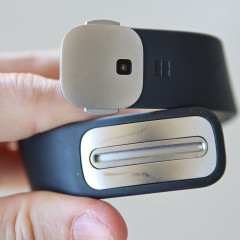

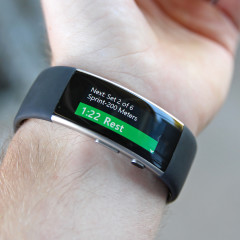
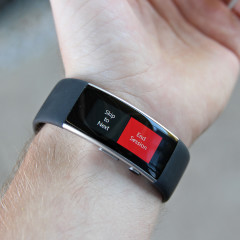
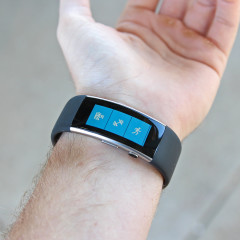
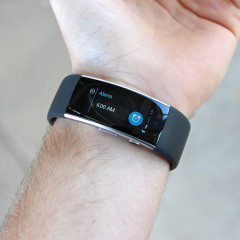
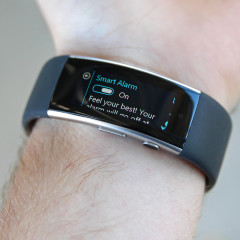


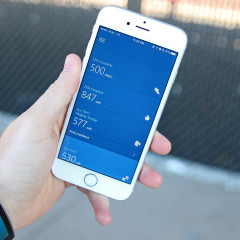








26 Comments - Add comment